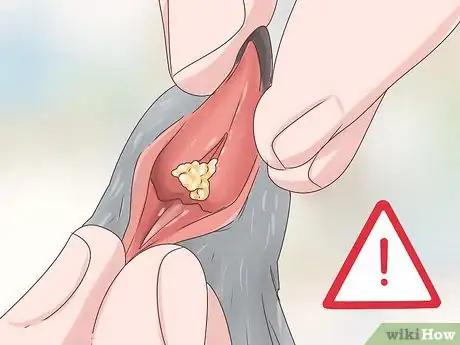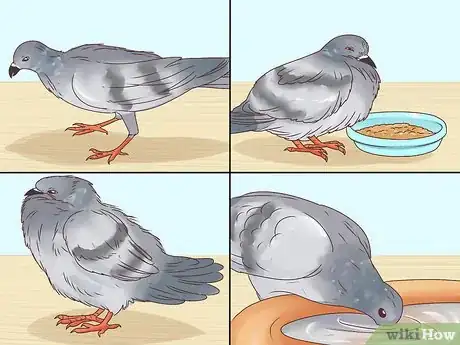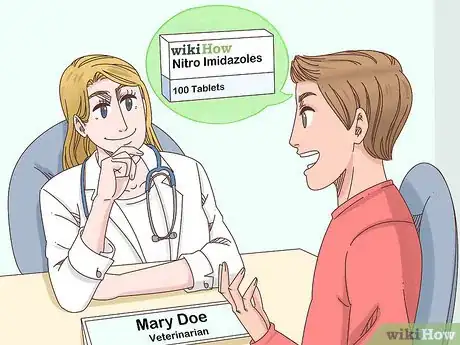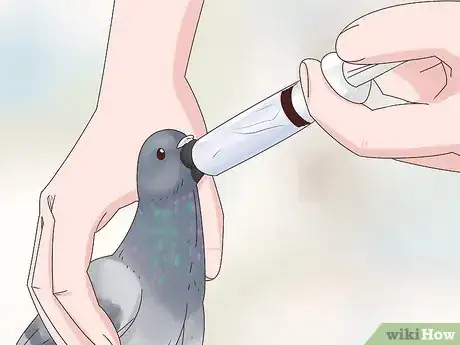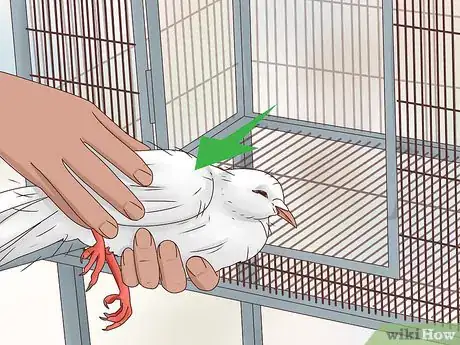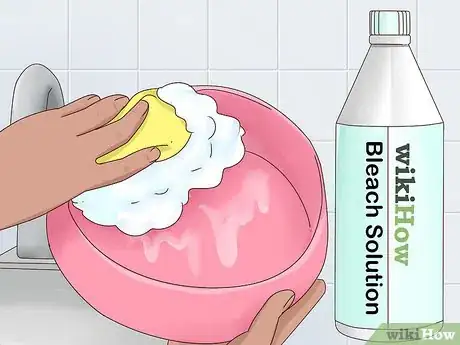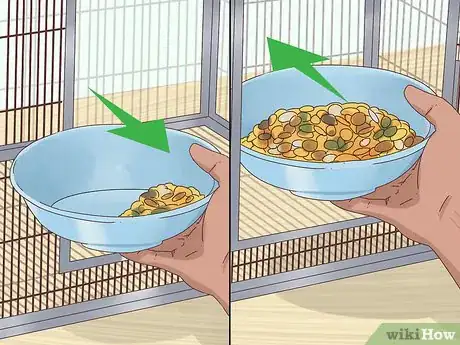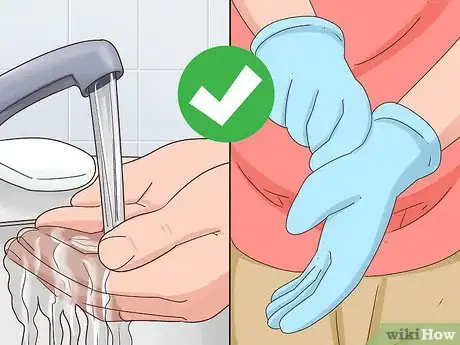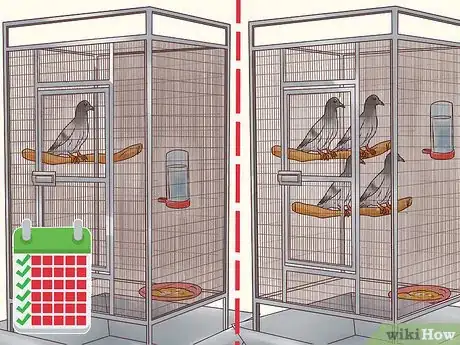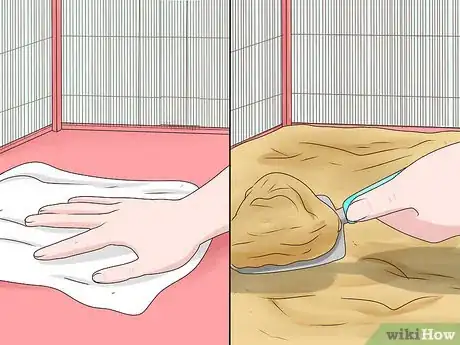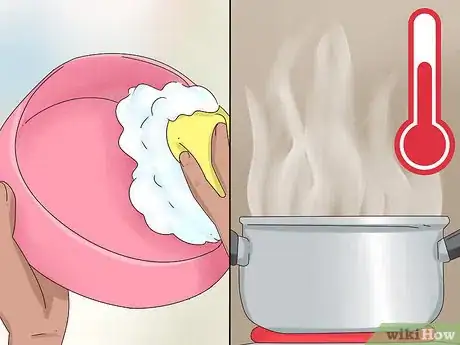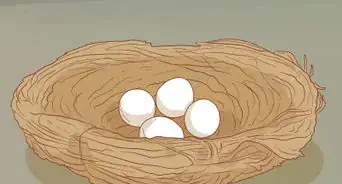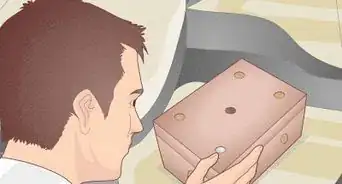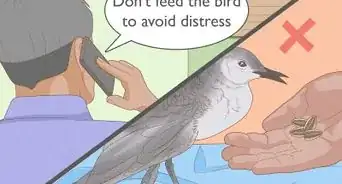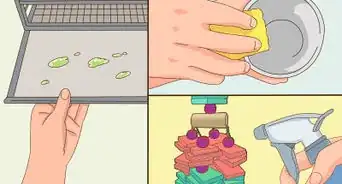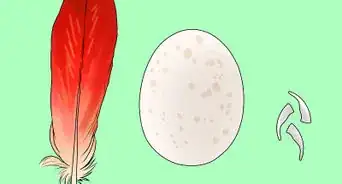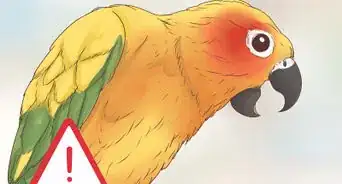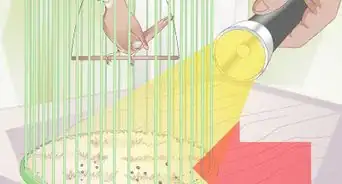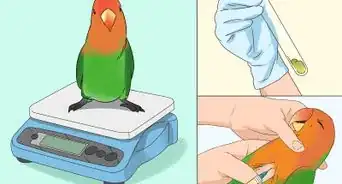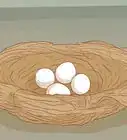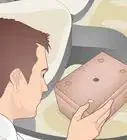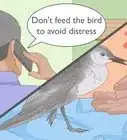This article was co-authored by Pippa Elliott, MRCVS. Dr. Elliott, BVMS, MRCVS is a veterinarian with over 30 years of experience in veterinary surgery and companion animal practice. She graduated from the University of Glasgow in 1987 with a degree in veterinary medicine and surgery. She has worked at the same animal clinic in her hometown for over 20 years.
This article has been viewed 19,339 times.
Trichomiasis or “canker” is very common among doves and pigeons. In most cases, doves have the protozoal parasite trichomonas that causes the disease but do not display any symptoms. However, young doves and pigeons are very susceptible to it. Passed on at feeding stations or through courtship, this disease can result in mortality. You should take vigilant measures to control the spread of the disease in your aviary.
Steps
Treating Individual Cases
-
1Look for cheesy-looking lesions in the mouth. Open your dove's mouth and take a close look at the lesions. If you see white, yellow, or brown, and cheesy-looking growths in the mouth, your dove may have canker. The growths look like nodules or ulcers at the back of the throat. As a result, your dove may have difficulty swallowing food.[1]
-
2Recognize loss of appetite and other key symptoms. Your dove may also salivate excessively, experience diarrhea, or look depressed.[2] Because of lesions in the mouth and throat, your dove may not be able to close its mouth, eat, or drink properly. Some of the other symptoms include:[3]
- Weight loss.
- Loss of appetite.
- Ruffled feathers.
- Excessive thirst.
- Loose droppings.
- Yellow, raised lesions in the oral cavity.
- Watery eyes.
- Respiratory distress.
- Lump in the naval area.
- Excessive mucus in the oral cavity.[4]
- Dehydration.
- Liver damage.
Advertisement -
3Ask your veterinarian about nitro imidazoles. Your avian veterinarian may be able to prescribe a new group of medications called nitro imidazoles. They typically come in water-soluble powders and syrups, which can be added to feed. There are four specific medications that have been used effectively against canker:
- Dimetridazole or Emtryl, which is a water-soluble powder.
- Carnidazole or Spartrix, which is available in tablet form.
- Metronidazole, which is a water-soluble syrup but also comes as tablets.
- Ronidazole, which is a water-soluble powder. There are a variety of brand names for the drug.
-
4Tube feed it with a critical care formula for birds. Although your dove will likely experience a loss of appetite, it's important to keep it well fed. Use a tube or hand feeding formula, which you can find at your local pet food store.
- You could also try adding a tablespoon of peanut butter to a bowl of water. The solution of peanut butter may be more palatable for your dove.
- You can ask your veterinarian for critical care formula.
- You can also give your bird a rehydration solution. Mix a pint of warm water with a teaspoon of honey and half a teaspoon of salt. Serve it in the water bowl.
Limiting the Spread of Trichomiasis
-
1Remove infected birds from the aviary. Since doves are infected with canker by having direct or indirect contact with infected birds, quarantine any birds with a virulent strain of the disease. At the same time, remove any common feed or other items shared between infected and non-infected birds.[5]
-
2Decontaminate feeding platforms with a bleach solution. Since the disease is spread orally and often through feed, disinfect all feeding areas with a bleach solution. Start by putting your doves in a separate cage. Then, scrub all feeding areas with the bleach solution before feeding your healthy birds.[6]
- You can use 10% bleach in a container of clean water.
-
3Replace feed on a daily basis. After an outbreak of trichomoniasis in your aviary, you'll need to be especially vigilant in controlling the spread of the disease. Every day, take out old feed and add fresh feed.[7]
-
4Wash your hands and wear protective gloves. Put on some protective gloves before doing any work in your aviary or with infected birds. After you finish in the aviary, take off the gloves and wash your hands and forearms.
Preventing Trichomiasis
-
1Quarantine new birds for thirty days. Because canker spreads so readily between doves and other birds, avoid contact between your flock and new birds. If you decide to add a new bird, you should put it in quarantine for thirty days. Put it in a separate cage with perches, water, and feeding bowls. During this time, watch it closely to make sure it doesn't have any symptoms of the disease. If it looks fine, you can add it to the aviary.[8]
-
2
-
3Use sanitized feeding dishes. Use a dish detergent to clean the water and food dishes. You should use boiling hot water to thoroughly disinfect them. A bleach solution can be used periodically, especially after an outbreak.[11]
- Clean the water and food dishes on a daily basis. Since the infection can be spread through saliva, it's important that the food and water dishes be thoroughly cleaned every day.[12]
References
- ↑ http://www.pet-informed-veterinary-advice-online.com/trichomonas.html
- ↑ http://animals.mom.me/illnesses-pigeons-9323.html
- ↑ https://www.beautyofbirds.com/canker.html
- ↑ http://www.pet-informed-veterinary-advice-online.com/trichomonas.html
- ↑ https://pubs.usgs.gov/itr/1999/field_manual_of_wildlife_diseases.pdf
- ↑ https://pubs.usgs.gov/itr/1999/field_manual_of_wildlife_diseases.pdf
- ↑ https://pubs.usgs.gov/itr/1999/field_manual_of_wildlife_diseases.pdf
- ↑ https://www.beautyofbirds.com/canker.html
- ↑ https://www.beautyofbirds.com/canker.html
About This Article
To treat trichomoniasis in your dove, watch for common symptoms like white, yellow, or brown growths in the mouth, weight loss, appetite loss, ruffled feathers, excessive thirst, loose dropping, or watery eyes. If your dove has any of these symptoms, take it to the vet right away to get a diagnosis and treatment plan. Once your dove has been diagnosed, you’ll most likely need to give it medication and tube feed it, since doves with this disease often don’t feel like eating. You’ll also need to put your sick dove in a separate cage away from other birds since trichomoniasis is contagious. Additionally, make sure to clean feeding areas with disinfectant and wash all of your birds’ food bowls to prevent the disease from spreading. To learn how to prevent trichomoniasis, read more from our Veterinary co-author.
